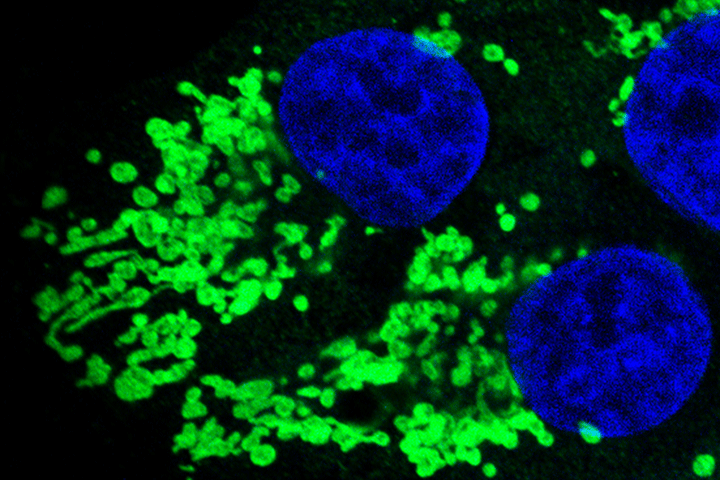Cachexia Research Gaining Momentum

The wasting syndrome known as cachexia comes from two ancient Greek words: kakos meaning “bad” and hexis meaning “condition.”
And indeed cachexia can be devastating, not only for patients, but also their caregivers. Cachexia affects as many as 80 percent of people with advanced cancer, and its triad of symptoms—extreme weight loss, loss of muscle, and an aversion to food—makes daily life a struggle while simultaneously increasing the risk of infections and organ failure. Although cachexia can occur in the later stages of many cancers as well as illnesses such as heart or kidney disease, AIDS, and autoimmune disorders like lupus, among others, it’s pancreatic cancer patients who seem to bear the brunt of the ravages of this syndrome. Some research shows that patients with pancreatic cancer have the highest prevalence, and often develop the most severe symptoms, of the syndrome.
“For many years, cachexia was really overlooked and people focused their research efforts on the primary illness whether that was cancer or another disease,” says cachexia researcher Teresa Zimmers, Ph.D., the H.H. Gregg Professor of Cancer Research at Indiana University School of Medicine, Indianapolis, Indiana. One of the big problems in getting cachexia the attention it is due was that it fell into a hole where it wasn’t recognized by oncologists and cancer biologists as an actual problem. “Killing the tumor was always the priority, and the fact that people are wasting away in the end stages of a disease like cancer was just the way it was, and the thinking was that not much could be done about it,” Zimmers says. She is the leader of the IU Simon Comprehensive Cancer Center Cachexia Working Group and co-leader of the Indiana Center for Musculoskeletal Health’s Cancer in Bone and Muscle Research Team.
She continues, “But now we know that’s not the case. There is abundant evidence that cachexia is a specific disease with specific molecular and cellular mechanisms that we can target. Treating cachexia in mouse models improves function, quality of life, and response to therapy, suggesting it will do the same for patients.”
Slowly Being Recognized
Cachexia is extraordinarily complex. Fortunately, researchers are honing in on its basic biology. Simply put, cachexia is the sickness response of the body to the tumor, triggered by a misfire of immune system cells. These cells begin to secrete increased levels of cytokines, which are cell-signaling proteins. These cytokines then signal the brain that it’s time to rev up metabolism and suppress activity and appetite. This causes an incredible amount of cellular stress, leading to inflammation. The body then starts to attack tissues, including heart, skeletal muscle, and fat tissue. “It’s not merely loss of appetite—the body is under active assault,” Zimmers says. “People lose fat and muscle more rapidly than they would if they simply stopped eating. As well, if you feed someone who hasn’t been eating, they are going to gain weight. If you have cachexia that doesn’t happen. It’s not reversible by consuming calories. The change in metabolism is too profound.”
Progress in understanding and then treating cancer comes from a marriage of discovery science and, of course, the clinical trial. For many years, cachexia didn’t spark much interest in either realm. According to Zimmers, cachexia studies constitute only 0.12 percent of all published research studies in cancer, and just a tiny fraction of interventional trials. The NIH website ClinicalTrials.gov tracks clinical studies in the U.S. and 218 other countries. Of the 64,287 interventional clinical trials registered there for cancer, only 181 are for cancer cachexia and 130 of those began in the past 10 years. “Considering where we were only 10 years ago, there has been exponential growth in the interest and recognition by influencers that cachexia is a huge problem,” she adds. “And it’s a problem that needs a solution.”
Looking for More Clues
One area of interest is targeting specific genes involved in the complex circuitry of appetite. One of those mediators is called GDF-15. GDF stands for growth differentiation factor. GDF-15 is what’s called a circulating protein and it has been implicated in energy homeostasis and body weight regulation. The circulating levels of the protein seem to be correlated with cachexia and reduced survival of cancer patients. Blocking GDF-15 has reduced the effects of cachexia in preclinical studies. In those preclinical studies, giving mice an antibody that acts on the GDF-15 receptor results in mice regaining weight.
Research is showing that certain secreted factors from a pancreas tumor signal the brain to promote a state of anorexia while other signals go to the fat and muscle cells and promote their breakdown. Pancreatic cancer has the highest incidence of cachexia even at its earliest stages. Patients lose on average 14 percent of body weight. Maintaining weight is not only important for quality of life, but for outcomes; patients that lose more than 10 percent of body weight have worse outcomes compared to those that lose less. Researchers are looking at the various mechanism of communication between tumor, brain, fat, and muscle and are trying to determine the pathways of muscle loss. They have already identified a defect in recruitment of muscle stem cells and muscle repair mechanisms, which is driven by an inflammatory pathway.
The American Society of Clinical Oncology (ASCO) recently came out with new guidelines for the management of cachexia, citing recommendations for dietary counseling but no specific drug interventions. There are currently no FDA-approved medications for cancer cachexia.
“Guidelines are based on evidence in literature as to what works, and unfortunately at this point the evidence is still pretty slim as to what works to help with the numerous problems that occur with cachexia,” Zimmers notes. “But the guidelines do give a doctor a place to start to address the issue.”
Developing treatments, demonstrating they are effective, and getting them approved for use requires the ability to diagnose and monitor cachexia using biological markers, the way blood glucose is used to diagnose and manage diabetes. Zimmers and colleagues are developing a study called MARCO, for MARkers of Cachexia in Oncology, which is a project of the FNIH Biomarkers Consortium’s Metabolic Disorders Steering Committee. The study is a two-phase approach. The first will include an analysis of two retrospective datasets—BioPAC in Denmark and LungMAP in the U.S. The second part will be a prospective study to validate phase I findings in a prospective Lung-MAP cohort. The study would cover over 6,000 patients and would fill a knowledge gap limiting development of treatments. MARCO will launch when enough funding partners sign on.
Zimmers is very hopeful that some answers to cachexia will be available sooner rather than later. “Up to this point, there simply wasn’t the recognition of its importance, but patients, their caregivers, advocacy groups, and the research community have changed that dynamic,” she says. “There is a lot of work to do, but I am confident we can get there. And we need to get there for the patients who have to deal with cachexia and for their families and friends who feel powerless to help them.”






